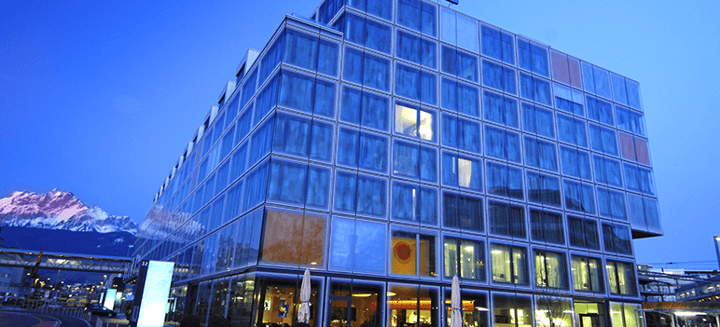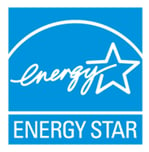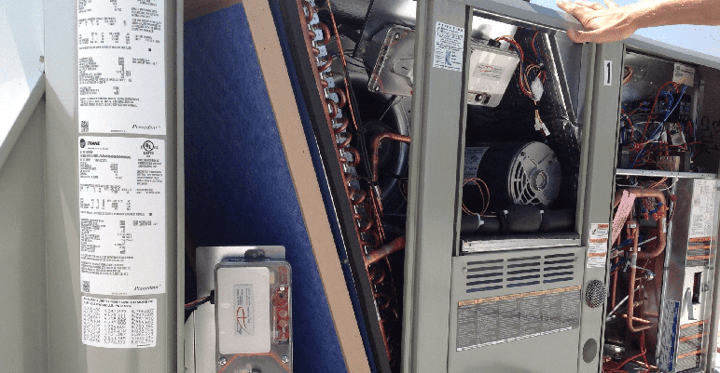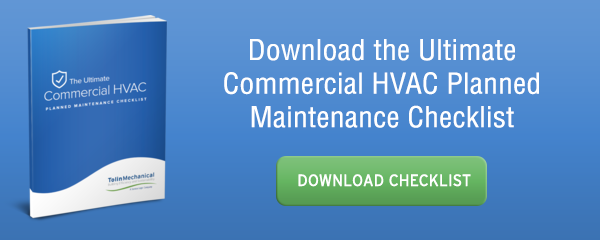The Facility Manager’s Guide to Energy Efficiency for Your Commercial Building

From the outside looking in, it seems there are a thousand different details — large and small — that go into operating a successful commercial building. And, of course, that’s true. But, as a commercial building owner or facility manager, you realize there are only a handful of topics that truly take priority.
In recent years, energy efficiency has shot toward the top of that list for nearly everyone responsible for commercial building operations and maintenance. The reasons are compelling:
Why energy efficiency matters to commercial building owners
There are both highly tangible and less tangible reasons for owners and managers of commercial facilities to concentrate on energy efficiency.
Tangible benefits
According to the latest statistics, just over half the total energy expended in the United States goes to powering commercial facilities. Logically, then, efforts to reduce energy usage for financial and environmental reasons have long focused on commercial buildings.
It’s been 25 years since the Energy Star program began, and it’s become the most successful volunteer program for environmental improvement in the world, eliminating over 2.5 billion metric tons of greenhouse gasses since its inception. Building and improving energy efficient commercial buildings has accounted for a large part of that feat.
It was estimated that in 2014 alone reductions traceable to the Energy Star program provided the American public with over $12 billion in societal benefits, while commercial building owners saved an incredible $34 billion on utility bills during the same period. That figure has been estimated at $360 billion since the program’s start in 1992.
So, a commercial building’s environmental impact in terms of energy efficiency has a significant impact on the bottom line, while also providing less tangible benefits along the way.
Less tangible benefits
Beyond saving money every month on utility costs and reducing long-term capital expenditures by boosting the life expectancy of critical building systems, prioritizing energy efficiency also boasts a number of less tangible (but equally important) results that can benefit businesses now and in the future.
For example, comfortable employees working in a facility with smooth-running, energy efficient heating and cooling have proven to be more productive and happier. This translates to higher production numbers, less errors, less paid sick time, and lower turnover.
Customers, business partners, vendors, and others who can directly affect your bottom line are concerned about the larger issue of environmental impact and sustainability. Therefore, businesses that prioritize energy efficiency have found their efforts serve a marketing and PR purpose, improving their brand image, boosting their professional reputation, attracting top talent, and reducing customer churn.
So, if you’re like most commercial building owners and facility managers, you’re rightfully interested in boosting your facility’s energy efficiency for both financial and environmental reasons. But how do you actually go about making that happen?
How HVAC factors into energy efficiency
There are numerous ways to approach improving a commercial facility’s energy efficiency:
- Switching to more energy efficient equipment, such as light bulbs, appliances, and large mechanical systems
- Maintaining equipment so it’s always running its best, and is therefore running efficiently.
- Upgrading building materials and other physical aspects of the facility to better insulate or ventilate.
- Adjusting the behavior of tenants and employees to promote energy saving practices.
- Supplementing existing systems with quality controls, including building automation and analytics solutions that provide for continual monitoring.
Obviously, these options are not limited to one building system, and all of them can yield tremendous benefits. However, a commercial building’s HVAC system generally accounts for more than half of its energy usage, so the heating, cooling, and ventilation system is a logical place to start exploring where improvements can be made to your facility's energy efficiency.
Consider these powerful statistics regarding energy usage by commercial HVAC systems:
- Adjusting the building thermostats one degree up in the summer and down in the winter can save up to 10% annually on heating and cooling costs.
- Programmable thermostats can produce savings of hundreds of dollars a year in a large facility.
- Air conditioning accounts for 15% of electricity costs in the average commercial building.
- More than 30% of the energy that goes into commercial HVAC systems is lost to inefficiency and waste.
- Changing filters in the HVAC system can reduce energy waste by 5-10%.
- Proper seals on heating and cooling ducts can improve energy efficiency up to 20%.
- Upgrading or replacing aging HVAC equipment can yield 5-20% gains in energy efficiency, especially if the equipment is more than 10 years old.

Based on these facts, it’s easy to understand why so many building owners have come to see an energy efficient HVAC system as the most important cost control opportunity available to them. And, while major capital expenditures like upgrading or replacing aging commercial HVAC equipment can certainly make a difference, many facility owners find that no- and low-cost improvements will often yield equally impressive results.
For example, one of our clients realized a 16% annual energy cost savings strictly through no- and low-cost improvements, while simultaneously raising their Energy Star score a full 24 points! Another client — a large mountain resort operator — saw a 12% energy cost reduction amounting to over $234,000 in annual savings.
If those results sound impressive considering your own circumstances, perhaps you’d like to know how Tolin Mechanical approaches creating a custom energy efficiency program for commercial HVAC systems.
What goes into boosting your commercial building’s HVAC energy efficiency?
An Energy Sustainability Services (ESS) program, developed and customized by Tolin Mechanical for each client, includes three phases:
- No-cost improvements
- Low-cost improvements
- Capital expenditure improvements
To identify these improvements for each unique facility, we run through a five-part process that results in an ESS with documented energy savings projections and expected ROI timetable. While there’s no obligation when an owner begins the process, realizing the full ROI depends on acting on all the recommendations of the energy engineers and technicians who develop the ESS.
The operational assessment
The first step in any energy efficiency program for a commercial building is a facility-wide operational assessment.
Basically, an operational assessment is an organized overview of a facility’s entire HVAC system by trained professional technicians who focus on the current condition of the system’s mechanical and electrical components, current and historical usage, operating costs, and maintenance records, all of which help them identify trends and highlight abnormalities in the data.
Beyond crunching numbers, the assessment also includes:
- Testing and analysis of the system’s mechanical integrity
- Exploring areas where repair, replacement or upgrade of components that are still functioning well could improve efficiency or performance or save money and time over potential emergency repairs down the road.
- If the building is equipped with automation and analytics systems, they will also be evaluated — including all control systems — for opportunities to optimize energy efficiency and usage trends.
- The technicians performing the assessment will also explore options for energy rebates, enhanced comfort, improved redundancy, and reliability.
The operational assessment offers building owners and facility managers an opportunity to discover future maintenance needs and the need for future repairs. This makes month-to-month and long-term operating budgets and capex planning easier.
It also provides a foundational understanding of your unique commercial HVAC system’s current and historical usage and cost patterns, which can help identify its current and potential capacity. This helps fill the gap between capacity and opportunities for potential efficiencies and improvements that can save money and extend the life of the system.
A prioritized list of improvements
When the operational assessment is completed, the resulting report amounts to a prioritized to-do list of actions you can take to ensure the highest return on your commercial HVAC investment. It will include both simple but impactful improvements that require little or no investment, and higher-cost items to consider when doing your capex planning for the next year.
At the top of the list will be the highest yield, lowest cost actions that can be taken immediately to improve energy efficiency and provide dramatic return quickly. These will often include items such as:
- Optimal thermostat settings
- Identification of cleaning and maintenance tasks affecting energy use
- Identifying easily fixed efficiency killers (like leaks, broken equipment, and reversible behaviors)
Recommendations further down the list may require a greater investment of time and money, but that will also improve energy optimization and provide excellent returns upon completion. These may include:
- Upgrades
- Repairs
- Replacement of outdated, inefficient equipment
Finally, the assessment leverages the expertise of your commercial HVAC partner in identifying those potential services that really won’t provide an adequate ROI through improved energy efficiency or lower operating costs. Both sides of the equation are equally valuable.
Making necessary repairs and replacements
While the first focus we always recommend involves grabbing that “low hanging fruit” — no- and low-cost items with excellent returns — there’s definitely a place for needed proactive repairs and replacements that may cost more, but also provide great returns that can last decades.

Being proactive with HVAC system upgrades and replacements offers a number of valuable benefits for any commercial building or manufacturing facility:
- Improved comfort
- Increased production
- Increased property value
- Increased sales
- Improved product quality
- Increased equipment longevity
- Reduced operating costs
- Controlled capital expenditures
In other words, approaching HVAC system upgrades and maintenance proactively saves money, boosts the facility’s ROI, and allows system improvements to be budgeted strategically, all of which benefit the business.
The key benefit to including replacements and repairs in an overall ESS is the fact that they then become a proactive, purposeful part of your strategic plan rather than an unexpected and inconvenient expense.
Building automation and analytics
Modern technology has added some incredible tools building owners and facility managers can use to improve the energy efficiency and control operating costs of their commercial building. Chief among these tools are the hardware and software solutions making up today’s building automation and analytics systems.
Whether your building is required by law to comply with one or more energy regulations, or you’re simply approaching energy efficiency as a cost-control method, building automation and analytics solutions can save both time and money while also making it easier for you and your small maintenance team to handle other aspects of running your building. Improving commercial building energy efficiency using intelligent control systems starts with three basic elements:
- Smart HVAC systems
- Smart lighting
- Smart access
Investing in "smart" lighting, access, and HVAC system controls have proven to yield positive ROI for commercial building owners and facility managers in Colorado who are struggling with rising energy costs.
For example, Wildwood Casino brought us in to help them lower utility costs in their 58,000 square foot Cripple Creek gaming facility. The solution included a heavy reliance on automation and analytics software to allow for real-time and remote monitoring of the building’s HVAC usage. The resulting ESS plan made possible a 38% reduction in natural gas usage and savings of over $74,000 in energy costs during the first year.
Intelligent controls also help to prevent emergency outages and expensive downtime by making it easier to note troublesome trends and predict equipment failures.
Finally, “smart” building control systems and building automation are desired features, so they increase the property's resale value.
Planned maintenance
The final piece in the ESS puzzle is, perhaps, the most important because it dictates how effective the rest of the plan will be and how long those positive results will last.
A planned HVAC maintenance program allows for trained and experienced HVAC technicians to routinely get inside your facility to inspect and maintain the system. It’s like having a service contract for your car, making sure the oil is changed, the tires are rotated, the brake pads are replaced, and all the other little details we often overlook get taken care of so you can be confident it’s going to start and get you from A to B when you put the key in.
In fact, incorporating a planned maintenance program for your commercial HVAC system into your building’s annual budget provides improved energy efficiency, along with a level of strategic, budget-worthy predictability and extended equipment life span, all of which result in lower operating costs.
Essentially, a planned maintenance program is a proactive schedule of inspections, tests, and necessary adjustments to optimize the system’s usage throughout the year. An experienced technician will visit your facility regularly to:
- Visually inspect the HVAC system
- Perform routine maintenance tasks like filter replacement and cleaning
- Make note of any components that can be proactively replaced or upgraded prior to an emergency repair being needed
- Review all system analytics (if available) and optimize the system for energy efficiency, either manually or via automation
- Learn about the current system status and any potential areas of concern so you can budget accordingly
The customer (mentioned earlier) who experienced a 16% annual energy savings has been able to maintain that level of savings because they also began a planned maintenance program that keeps the initial improvements in tact.
What should you do with this information?
All commercial building owners and facility managers have compelling reason to focus attention and resources on improving the energy efficiency of your commercial buildings. Not only are there clear, tangible benefits to be gained (including lower operating costs), but there are many other more subtle benefits available as well.
If you need guidance in assessing how much energy your commercial building in Colorado, Arizona or Virginia uses on a daily basis, or you don’t yet have a formal Energy Sustainability Services program in place to provide strategic improvements in its energy usage, contact Tolin Mechanical today. We’ll be delighted to rectify that situation and set you on the road to ongoing building energy efficiency.

